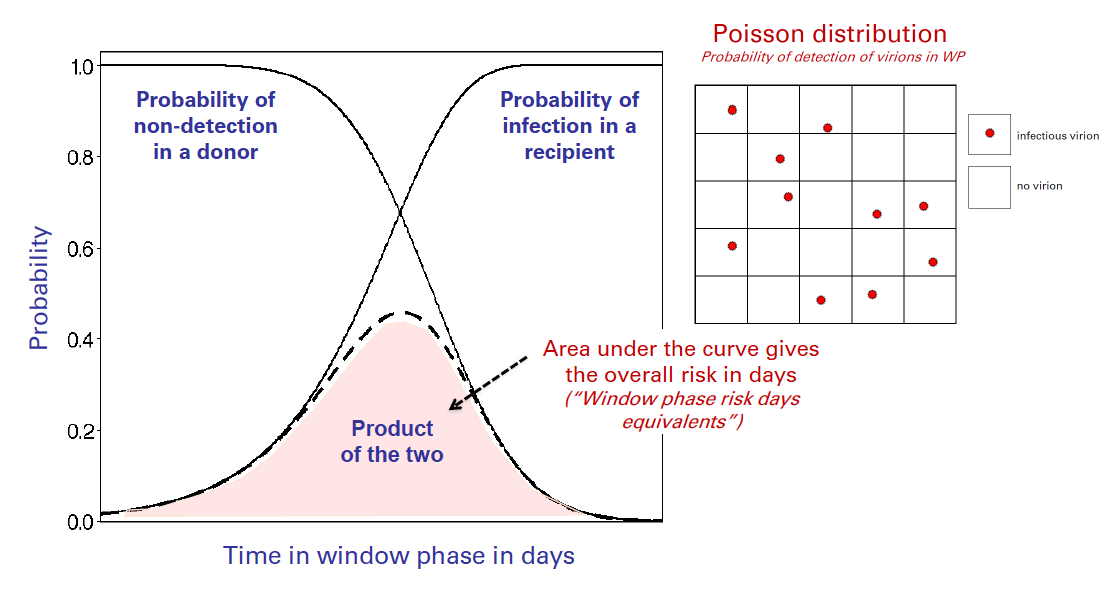CREATING CONFIDENCE
RESEARCH
Residual window period transmission risk of NAT screened blood donations
Thanks to the standardization of 95% and 50% LODs and MID50 in nucleic acid copies or virion numbers we were able to develop an infectivity based risk model for NAT screened blood donations. The transmission risk at any time in the window period depends on the probability of nondetection by the NAT system, multiplied by the probability that the missed window period donation is infectious in a recipient. With the currently used individual donation or small pool NAT systems the transmission risk never reaches 100% in the window period. One can mathematically estimate the length of the window period in risk day equivalents from the product of both probabilities (see figure below).
Figure. Probability of infectivity of NAT screened blood during the window period

A window period risk model spreadsheet is available to estimate the window period risk day equivalents depending on the 95% and 50% LODs in copies/mL of the NAT system, the number of nucleic acid copies per virion, the MID50 in virions, the viral doubling time and the transfusion plasma volume of the blood component. The residual risk in repeat donors can be estimated from the seroconversion rate and the harmonic mean of pre-seroconversion inter-donation intervals.
Learn more about our research
- Window period transmission risk